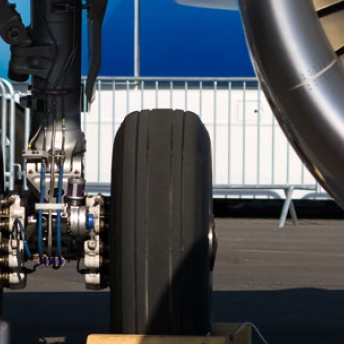Kurt Baes
Kurt advises energy, utility, aerospace, automotive and manufacturing companies on performance improvement, growth strategy, and large organizational transformation.

Areas of Focus
Education
Past Experience

Kurt is Managing Partner, leading Arthur D. Little in Belgium and Luxembourg and based in Brussels, with over 20 years of strategy consulting experience. He has lived and worked in Europe, Asia and North America. He is the local leader of various industry (Oil & Gas, Utilities & Alternative Energy, Automotive, Industrial Goods & Services) and functional (Performance) practices. He also heads our Global Competence Center Leader for Energy Transmission.
Kurt serves a broad range of Energy & Utility players and their suppliers in international assignments, such as:
- Strategy and business planning
- Global organization redesign
- Operational excellence/performance boosting
- Large capital projects & programs
- Engineering management
- Risk and portfolio management
- Asset management
Kurt advises large and mid-size global clients in the automotive and manufacturing industries (aerospace, construction, electronics) on assignments such as:
- Strategy and business planning
- Market analysis and entry strategy, including transaction support
- Industrial reorganization and operations turnaround
- Performance improvement
In addition, he advises in the area of Operations Management in international context cross-industry, covering Sourcing, Manufacturing, Supply Chain Management, and overall Performance Improvement.

Accelerating building energy efficiency

The buzz about energy data & where to find it

How data sharing is essential to deliver industry-wide transformation

Powering India’s energy vision 2030

Disruption is now

Appetite for disruption – Making the most of the future of food

Sustainability in the supply chain: The risks and the rewards

Industrial energy management

Distributed flexibility: The next pool of value

Energy retailers: Facing the toughest transition in the energy sector

What’s next for TSOs?

Flexibility services: Catch me if you can!

Future of batteries

Virtual Power Plants – At the heart of the energy transition

Battery Storage: Still Too Early?

Demand Side Management

Aerospace Supplier Squeeze – Ways Out?

Maximize value from quality-testing operations:

Keeping the lights on

Agility in managing electricity grids: The case for batteries

Balancing the positives and negatives – The rise of the battery ecosystem

Kurt is Managing Partner, leading Arthur D. Little in Belgium and Luxembourg and based in Brussels, with over 20 years of strategy consulting experience. He has lived and worked in Europe, Asia and North America. He is the local leader of various industry (Oil & Gas, Utilities & Alternative Energy, Automotive, Industrial Goods & Services) and functional (Performance) practices. He also heads our Global Competence Center Leader for Energy Transmission.
Kurt serves a broad range of Energy & Utility players and their suppliers in international assignments, such as:
- Strategy and business planning
- Global organization redesign
- Operational excellence/performance boosting
- Large capital projects & programs
- Engineering management
- Risk and portfolio management
- Asset management
Kurt advises large and mid-size global clients in the automotive and manufacturing industries (aerospace, construction, electronics) on assignments such as:
- Strategy and business planning
- Market analysis and entry strategy, including transaction support
- Industrial reorganization and operations turnaround
- Performance improvement
In addition, he advises in the area of Operations Management in international context cross-industry, covering Sourcing, Manufacturing, Supply Chain Management, and overall Performance Improvement.

Accelerating building energy efficiency

The buzz about energy data & where to find it

How data sharing is essential to deliver industry-wide transformation

Powering India’s energy vision 2030

Disruption is now

Appetite for disruption – Making the most of the future of food

Sustainability in the supply chain: The risks and the rewards

Industrial energy management

Distributed flexibility: The next pool of value

Energy retailers: Facing the toughest transition in the energy sector

What’s next for TSOs?

Flexibility services: Catch me if you can!

Future of batteries

Virtual Power Plants – At the heart of the energy transition

Battery Storage: Still Too Early?

Demand Side Management

Aerospace Supplier Squeeze – Ways Out?

Maximize value from quality-testing operations:

Keeping the lights on

Agility in managing electricity grids: The case for batteries

Balancing the positives and negatives – The rise of the battery ecosystem
More About Kurt
- Cornell University (NY, USA)Master of Business Administration
- K.U.Leuven (Belgium)Master of Science in Applied Economics
- VolvoVarious intern positions
